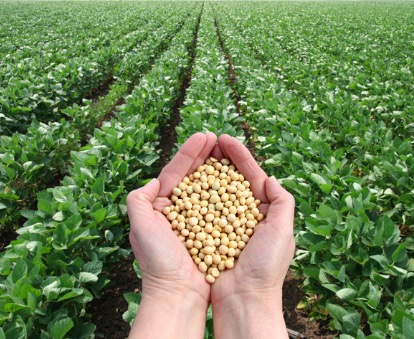Innovations in Oils
Transitioning to renewable resources

ACETYL-TAG OILS
Triglycerides in plant oils are generally comprised of long chain fatty acids, predominantly C16, C18, C20 and C22, or in some species including medium chain fatty acids such as C10, C12 and C14. However seeds of the Burning Bush (Euonymus alatus) are unique in that they contain triglycerides where one of the positions is occupied by an acetyl (C2) group, referred to as acetyl-TAG.
The presence of the acetyl group imparts potentially valuable properties to the oil including lower viscosity, freezing point and calorie content than typical plant oils. These features make the oil suitable for direct use as a ‘drop-in’ renewable fuel for diesel engines without first needing conversion to methyl esters, potentially reducing the cost of production of bio-based diesel.
Since the Burning Bush is an undomesticated plant with low oil productivity, researchers at Michigan State University and Kansas State University sought to transfer this acetyl-TAG capability into a higher-yielding oilseed plant, focussing on Camelina (Camelina sativa, also known as ‘false flax’) as the crop platform.
Camelina has been used as a minor crop source of oil for both heating and human consumption since ancient times. The seed contains around 37% oil with a fatty acid profile rich in the omega-3 linolenic acid (like flaxseed oil). Improved cultivars of Camelina have been developed in Europe and the U.S. and the crop has received renewed research and agricultural attention in recent years, particularly because it is very amenable to genetic transformation.
The researchers first investigated the biosynthesis of acetyl-TAG in the seeds of Burning Bush. They uncovered the acyltransferase gene responsible for specifically placing the acetyl group on the third position of the TAG and then transformed this gene into Camelina and expressed it seed-specifically. They also included an RNAi gene silencing construct to suppress the endogenous Camelina DGAT1 enzyme that normally places a long-chain fatty acid in the third position. These combined changes resulted in an oil in which 85% of the oil was acetyl-TAG molecules.
The acetyl-TAG Camelina has been evaluated in field trials in the US and Canada, and the oil has been produced in sufficient quantities for industrial evaluation. The oil is expected to have a range of food and non-food applications as emulsifier, plasticizer, solvent, and drop-in biofuel. Samples of the oil are obtainable for evaluation, and the Acetyl-TAG Camelina technology is available for commercialisation through Michigan State University by contacting oilseeds@msu.edu
Get the facts …
Towards the synthetic design of camelina oil enriched in tailored acetyl-triacylglycerols with medium-chain fatty acids. Journal Experimental Botany (2018)
Metabolic engineering of oilseed crops to produce high levels of novel acetyl glyceride oils with reduced viscosity, freezing point and calorific value. Plant Biotechnology Journal (2015)
<-- More Oil Innovations -->

BIOMASS OIL
Crop plants engineered to make large amounts of triglyceride oils in their leaves, stems and roots rather than just in their seeds and fruits.

OMEGA-3 CANOLA
Canola oil engineered as a sustainable, affordable & safe plant source of ω3 DHA & EPA, essential dietary fatty acids normally obtained from fish.

SHO SAFFLOWER
Super-high oleic (92%) safflower oil has been developed for use in high-stability industrial lubricants and as a feedstock for chemicals and polymers.

LINOLA
Low-linolenic linseed oil developed by induced mutation provides an alternative source of polyunsaturated oil for food and industrial use.

WAX ESTERS
Crambe is being engineered to produce novel waxes that combine fatty acids and alcohols for use as lubricants and renewable industrial feedstocks.

ACETYL-TAG OILS
Unique triglycerides with an acetate group replacing one of the fatty acids, have reduced viscosity and can be drop-in replacements for diesel fuels.

HIGH OLEIC SOYBEAN
Soybean producing highly stable oil with up to 82% oleic acid is the first new oil crop to be developed using advanced gene editing technology.

